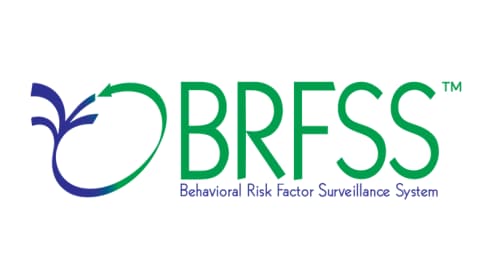At a glance

BRFSS Caregiver Module versions
View the 2015 version of the 9-item BRFSS Caregiver module
View the 2019 version of the 9-item BRFSS Caregiver module
Frequently Asked Questions
Caregivers provide regular care to family or friends with a chronic illness or disability. Giving caregivers what they need to be healthy and well can improve the health of the U.S. population.
The Healthy Brain Initiative's Public Health Road Map series identifies the BRFSS Caregiver module as a tool for collecting public health data on caregivers. This data can provide information to make decisions about strategies and policies that might help caregivers. Asking caregivers about their stresses and needs can help caregivers be healthy and continue to take care of others.
Experts and other partners familiar with caregiving provided comments on the questions. With this input, CDC drafted questions for the module and external experts provided review and comments. Three rounds of cognitive testing on the module were performed to help ensure that the questions would be easy to understand and answer.
In 2009, the BRFSS questionnaire included the question, “People may provide regular care or assistance to a friend or family member who has a health problem, long-term illness, or disability. During the past month, did you provide any such care or assistance to a friend or family member?” The caregiver screening question was asked to all respondents (age 18 and older). A descriptive report using these data was published in 2013.
The Caregiver Module was developed to capture more detailed information about caregivers’ activities and experiences to allow for a more in-depth assessment of caregiver status and health.
The module was updated for the 2015 BRFSS to reduce questions from 10 to 9. Several options were revised to be easier to understand, including the care recipient's health problem, duration of caregiving, and hours of care per week. Three questions were added to ask about unmet needs by caregivers. A question was added for respondents who currently don't provide care, inquiring about expectations to provide care in the future.
In 2016, the category of "unmarried partner" was added to give an option describing the caregiver's relationship with the care recipient.
In 2019, a question about unmet caregiver needs was removed from the Caregiver module. A question was added to ask whether caregivers care for persons with Alzheimer's disease or other dementias or another form of cognitive impairment.
The revised 9-item module allows states to understand multiple aspects of the caregiver-care recipient relationship, including:
- Percentage of adults 18 years or older who self-report being a caregiver to a person with a health problem or disability.
- Relationship between the caregiver and the care recipient.
- Length of time as a caregiver.
- Average hours of caregiving provided per week.
- Main health problem or disability of the care recipient.
- If the care recipient has Alzheimer's disease or another dementia along with another health problem or disability (question added in 2019).
- Help with household tasks.
- Help with personal care tasks.
- Number of persons who expect to be caregivers within th next two years.
The module can provide the following state-level data leading to valuable insights:
- Percentage of adults who have been a caregiver in the past 30 days.
- Health conditions and behaviors of caregivers can be linked to other BRFSS measures such as obesity and physical activity.
- The intensity and duration of care defined by the average number of weekly caregiving hours and length of time that care has been provided.
- The number of persons who are not currently caregivers but who expect to be caregivers in the next 2 years.
Caregivers help people who might otherwise seek care in places like nursing homes. While there are benefits to caregiving, it can also be stressful, tiring, and can have financial consequences for the caregiver. Studies have shown differences in health between caregivers and non-caregivers.
States administering the current Caregiver module varies by year. Information regarding states that administered the Caregiver module by year are available on the BRFSS website. View the corresponding infographics.
The module asks about a broad range of caregivers. It includes those who provide care for only a few hours per week and those who are not the primary caregiver. It is intended to collect data on informal or family caregivers. These caregivers are not professional caregivers providing care as a part of their job.
The BRFSS surveys adults living in the community and does not include people who are cared for in places like nursing homes. Additionally, if the person cannot answer the survey because of physical or cognitive problems, the person and anyone living in their household are removed from the sample.
This statistical brief provides guidance for those analyzing data from the current BRFSS Caregiver Optional Module.
CDC publishes various research papers using data from the BRFSS Caregiver Optional module data. View a list of these and other papers.
Since 2015, CDC, in collaboration with the Alzheimer's Association, has developed a series of state-specific infographics. These infographics depict the data for each year that a state collects BRFSS data using the Caregiver module. Infographics presenting combined national data overall and by various demographic groups are also available.
Data can also be queried using the Alzheimer's Disease and Healthy Aging Data Portal and a series data briefs for action are available on select topics.
Researchers not familiar with BRFSS data analyses can read more about BRFSS methods, including statistical considerations, at CDC's BRFSS site.
This statistical brief provides an overview and guidance for analyzing data from the current BRFSS Caregiver Optional Module.
